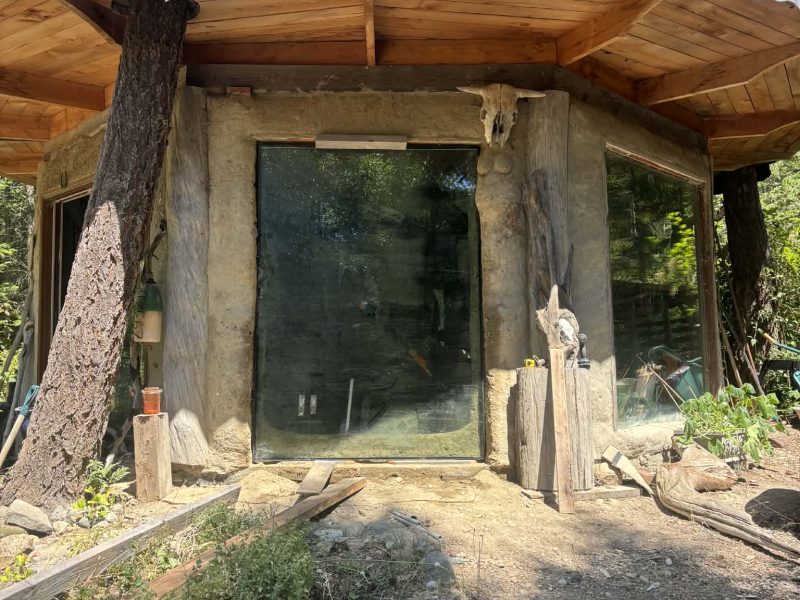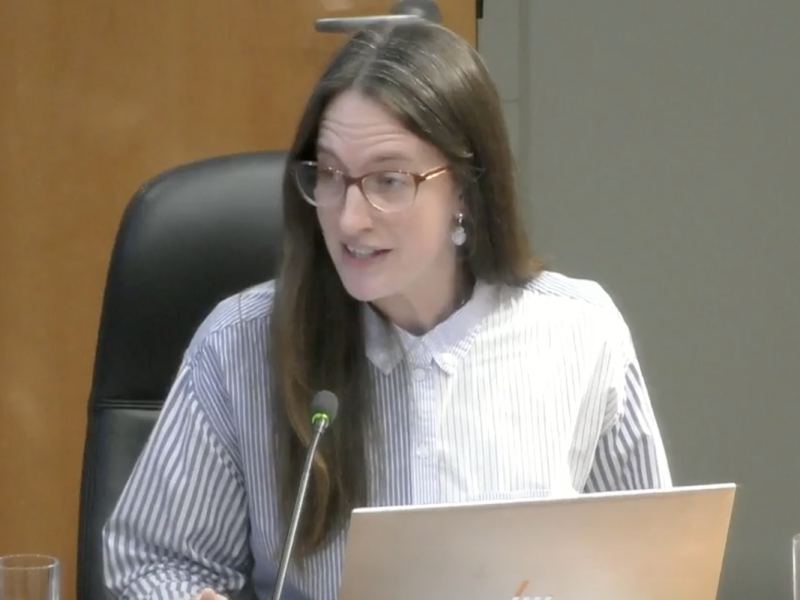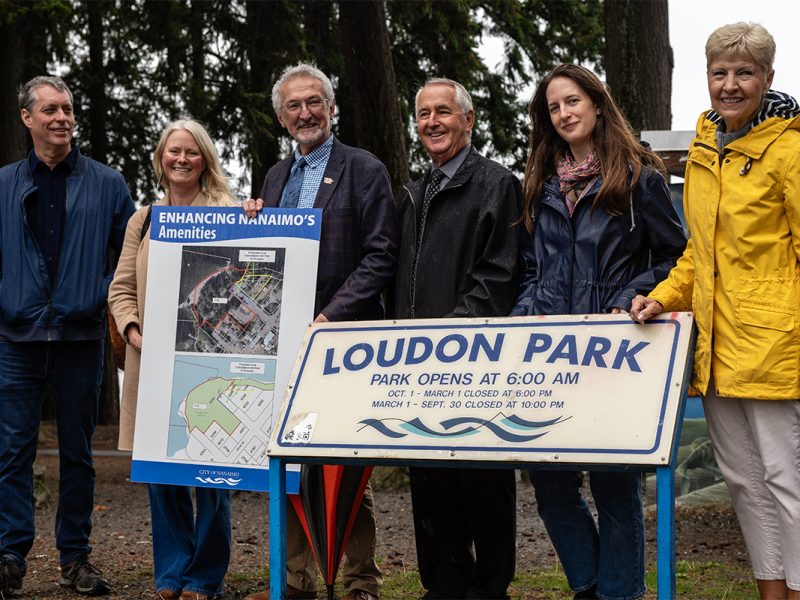
This story is part of a series. Read our story about the potential future of the railway here and its controversial history here.
Is there a business case to restore passenger rail service to Vancouver Island?
This is the central question that’s tied up countless hours of meetings over the past nine years, and generated hundreds of pages of studies and reports.
Ever since VIA Rail suspended passenger train service in 2011, politicians, engineers, and supporters of passenger rail have spent nearly a decade trying to figure out a way to bring it back.
The service covered 225 kilometers of track stretching from Victoria to Courtenay and west from Parksville to Port Alberni.
The train was operational for over 100 years, until 2011 when service was suspended over concerns about the safety of the track.
Since then, millions of taxpayer dollars have been spent on three major government-funded studies, plus additional work by the Island Corridor Foundation (ICF), which owns the rail corridor. A competing organization that wants to see the rail tracks torn out and replaced with a cycling and multiuse pathway, Rails to Trails Vancouver Island, has funded its own analysis as well.
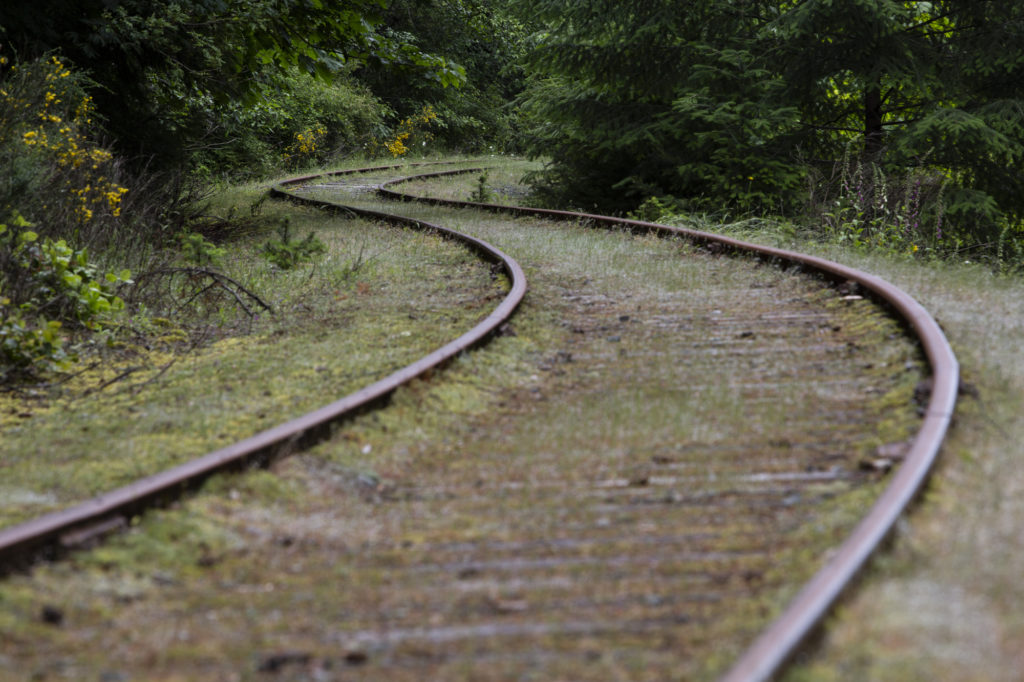
“My personal view is this is the most studied piece of track in North America,” says ICF CEO Larry Stevenson. “I have so many studies that it’s crazy and they all have their warts and they all have their high points and their low points.”
“What all that has managed to do is create this environment where nobody really knows (exactly what it would cost), everybody’s scratching their head and everybody’s frustrated. And, you know, everybody’s kind had enough of it,” he says.
The ICF was started in 2003 with the goal of preserving the corridor and passenger rail service when then-owner Canadian Pacific Railway began signalling it wanted out of the game. A few years later, the ICF formally took over ownership of the corridor on behalf of the regional districts and First Nations along its route, making the corridor a public asset.
[optin-monster slug=”bmlxb1qm9olletoj6dcz”]
Unpacking the studies
In 2011 before the service shut down, an ICF report said it would cost only $15 million to maintain the existing service in a safe operating condition, plus $8 million in expected funding to restore the passenger cars. Stevenson says that was at best a Band-Aid solution, meant to buy eight or 10 years worth of service while the owners figured out a longer-term business model.
Adding incremental service improvements like track upgrades, higher train speeds, wheelchair accessibility, and rejuvenated stations could push annual ridership as high as 159,000 by 2026, the ICF said, higher than the 50,000 that existed at the time
The estimates in that request leaned heavily on a 2010 study by B.C.’s Ministry of Transportation and Infrastructure, which pegged the cost of infrastructure repairs and deferred maintenance at between $70 and $130 million to keep the line running, plus roughly $1.4 million in an annual subsidy to the VIA Rail passenger service.
In analyzing the market conditions, the 2010 Ministry report said it would take a nearly 20-fold increase in freight traffic up to 16,500 carloads per year from barely 900 to cover the cost of the upgrades, and 8,000 carloads per year to cover basic annual operating costs. This expansion of freight traffic was contingent in part on a proposed coal mine near Courtenay, which has since been abandoned.
Other market opportunities included a specially-designed excursion train for tourists driven by Nanaimo’s soon-to-be built cruise ship terminal, which was expected to see 31,000 passengers visiting the city each year.
In April 2020, the B.C. Government released the most comprehensive report yet into the state of the rail line, and the expected costs to get service back up and running.
The author of the report, WSP Canada Group Limited, recommended that the project be conducted over three sequential phases. It pegged the costs for three phases at $326 million, $552 million and a cumulative $729 million once the project is complete, not including operational and maintenance costs.
Stevenson says he largely accepts the figures reported in the WSP study —with one caveat: he says the contingency budgets included in these totals are too high.
“When you go through (the report) it actually doubles the cost,” pointing to 50 per cent contingencies for everything from First Nations consultation to construction. “If I tell you something’s going to cost $200 million, they’ve doubled it to $400 million just to cover the contingency.”
Stevenson says that with lower contingency buffers, a modified version of the intermediate phase single-train scenario could be accomplished relatively quickly for around $300 million.

State of the track
To better understand the condition of the tracks, The Discourse took a tour along the E&N Railway line south of Nanaimo with Stevenson, ICF corridor development manager Andrea Thomas, and Al Kutaj, superintendent of the Southern Railway of Vancouver Island, which operates the rail line.
Riding the rails themselves is like peering into a microcosm for the project as a whole.
Between Chemainus and Ladysmith, there are sections of multiuse pathways winding through the trees, following the rail corridor right-of-way.
Over the years, the ICF has provided land and worked with municipalities to develop 100 kilometers of multiuse pathways alongside the rail corridor, Stevenson explains proudly. According to the ICF’s most recent operations plan, “Rails-with-Trails” is one of its four key focus areas.
Combining rail with trails adds to social equity, Stevenson says, by also creating networks that promote green transportation for short trips. In Nanaimo for example, a section of paved trail alongside the tracks forms a key part of the city’s cycling infrastructure.
Large sections of the line still meet minimum safety requirements, says Kutaj, meaning that with work, including the replacement of between 40 and 60 per cent of the wooden railway beams (called ties) at various points along the corridor, the line could carry passenger trains again relatively soon.
However, they’d be restricted to their previous speeds of around 48 kilometres per hour, which means a roughly five-hour ride from Courtenay to Victoria. What the line really needs, Stevenson says, is an upgrade allowing passenger trains to speed up to around 80 kilometres per hour, which would cut the travel time to just over three hours.
Stevenson lives in Duncan himself, and finds the existing BC Transit bus system exhausting.
“There’s 400 people that live in Duncan and commute an hour and a half each way to Victoria on the bus every day for work,” he said.
“Those buses shouldn’t be on that highway,” Stevenson says. “It should be handled by a train, cause it’s much more efficient.”
Stevenson isn’t alone in that assessment. A 2017 survey conducted by the ICF found high levels of support for bringing back passenger rail along the southern half of the corridor.
Of the 438 respondents, 71 per cent supported rail service, and 69 per cent said they supported the continued Rails with Trails model for the corridor, though some preferred trails without the rails.
Support for renewed passenger rail was strongest (at 94 per cent) among residents near Victoria, the Cowichan Valley (78 per cent) and Greater Nanaimo (74 per cent).

Along with providing transportation options for people who can’t, or don’t want to drive, proponents of passenger rail point to several other key benefits as well.
Nanaimo Mayor Leonard Krog has long been a supporter of bringing back island passenger rail. His grandfather helped survey the line near Cameron Lake and the famous Cathedral Grove old-growth forest between Nanaimo and Port Alberni.
The population of Nanaimo is growing faster than the B.C. average, and the addition of rail could help support that, Krog says.
As the city grows, so will its need for goods that – at the moment – can only come up the island in trucks on the highway.
“On the goods delivery side, it’s obviously positive,” Krog says. “In terms of our downtown, imagine cruise ships coming to our cruise terminal and passengers being able to take a lovely excursion trip to Cameron Lake or Port Alberni, or south to Duncan and the Aboriginal Centre.”
Krog says the renewed passenger rail would also help revitalize the city’s struggling downtown core by creating a draw for more people to live there, or providing better access to people living further away.
“Imagine the possibility of shorter tourist trains, or simply running people from the north end of Nanaimo into downtown to go to work,” Krog says.
“If we let our rail disappear forever that’s not going to get rebuilt. Once the track is gone… it’s gone,” says Krog.
The primacy of rail is a perspective shared by the Port of Nanaimo’s President and CEO Ian Marr. He says getting the rail line up and running again could bring huge boons for the port.
“The feedback we’ve got (from the cruise ship industry pre-COVID) is that they are very interested,” Marr says. “Their clientele really get into the train movement thing.”
But it’s the possible expansion of freight traffic that Marr says means the most to the port.
“We’re looking to expand our facilities,” Marr says, “and we have funding to do that. If we can line up with the rail here, we have a facility and a logistics park. We can start to look at the whole island in a different context.”
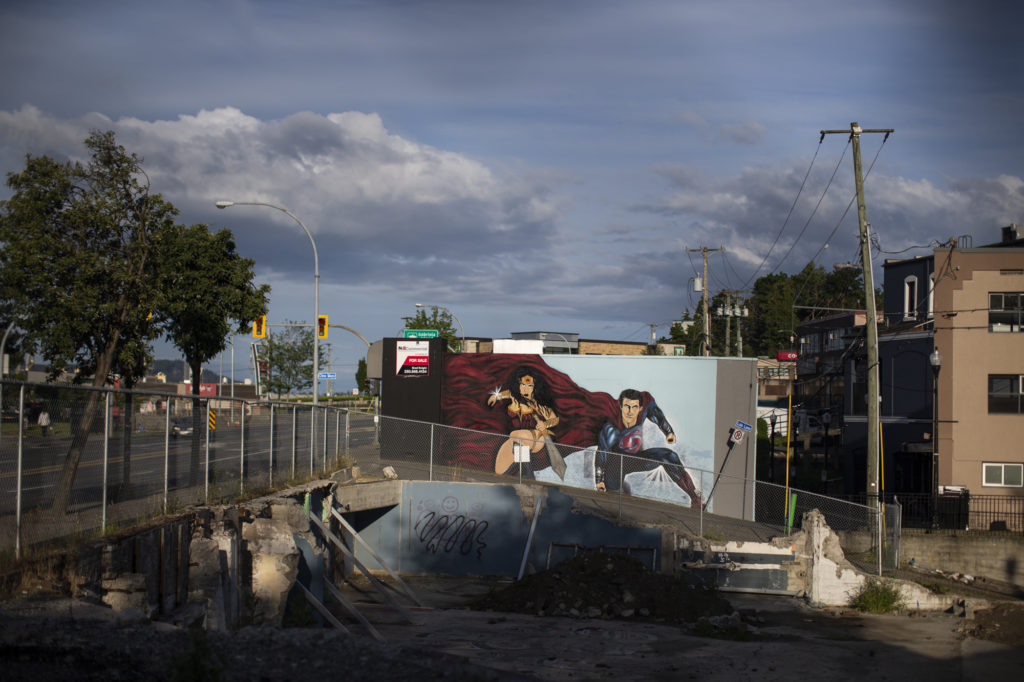
But not everyone believes the promise of rail is what’s best for Nanaimo.
Given the high rates of homelessness, addictions and mental health challenges in the city’s downtown, Nanaimo Chamber of Commerce CEO Kim Smythe says he would rather see the money for rail revitalization go towards addressing the city’s unmet social needs.
“Just to construct appropriate shelters and housing, you’re probably talking in the $50 million to a $100 million dollar range,” says Smythe, who sits on Nanaimo’s homelessness coalition and on the mayor’s task force on health and housing.
“We have a homeless population of 600 … people who need shelter. And once those buildings are built, you also have to provide the wraparound services for mental health, for addiction rehabilitation, for security … you can’t just go from zero to 60,” he says.
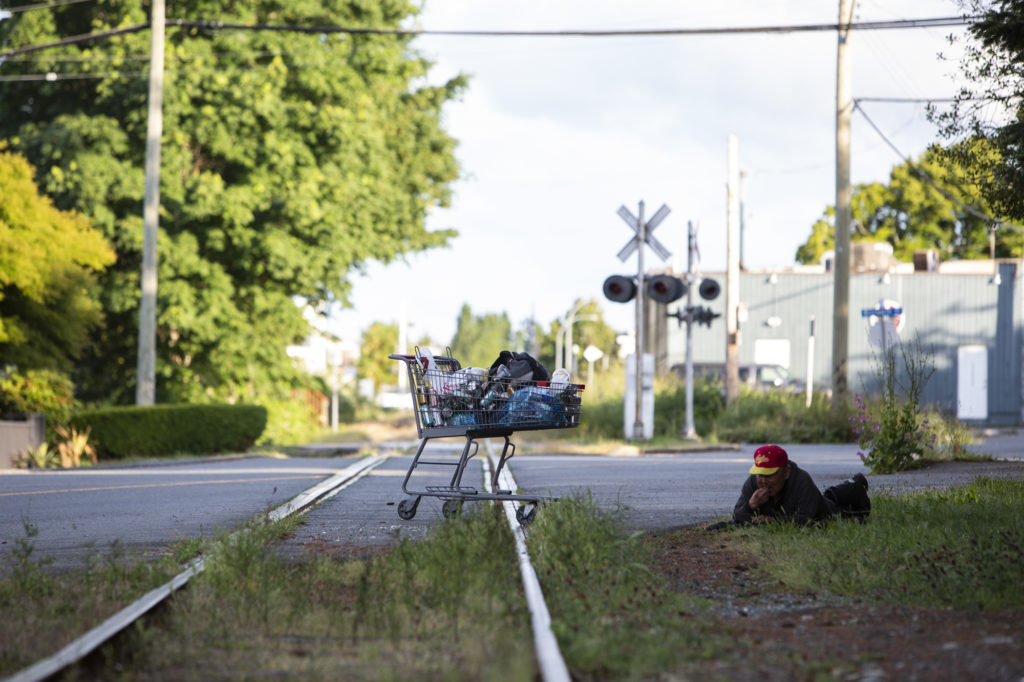
Smythe also said he disagrees that there’s a strong business case for reviving passenger rail.
Even though the ICF acknowledged that its 2017 survey likely included some amount of confirmation bias – meaning people who value rail infrastructure were more likely to fill it out – it showed that north of Nanaimo, support for restoring service fell to between 58 per cent in the Comox Valley and 33 per cent in Parksville/ Qualicum Beach.
There are other potential stumbling blocks as well. The coal mine which would supply much of the potential freight traffic identified in the 2010 government study was never built. And while cruise ship traffic was cited as an opportunity for growth, the study’s examination of the cruise industry’s appetite for a specialty tourist train found that rather than clamoring for one, most cruise ship companies surveyed “indicated very limited or no interest” in a Victoria-based train.
Since it opened in 2011, Nanaimo’s $22 million cruise ship terminal has seen only a handful of vessels each year. Before this summer’s plans were cancelled due to the coronavirus pandemic, the port was expecting six vessels to visit for a total of around 5,500 visitors – far from the dozens of ships and 31,000 visitors predicted by previous reports and studies.
For Smythe, that points to a serious crack in the return-to-rail arguments.
“I could see the argument for bringing back commuter rail for the Capital Regional District,” Smythe says, but along the northern stretches of the line “the population lacks the density for this to make any sense whatsoever.”
The B.C. government’s regional transportation strategy released in September of this year only states that commuter rail between Victoria and Langford should continue to be explored long term.
A Competing Vision
There is, however, a much cheaper way to preserve the railway corridor, but it’s an option that the ICF is loath to accept.
A competing organization called the Friends of Rails to Trails Vancouver Island (FORT-VI) advocates tearing out the rail line altogether and converting the corridor into a multiuse pathway like the Galloping Goose in Victoria, or the Kettle Valley Rail Trail in the B.C. Interior.
“You look at the great successes of bikeways around Europe … or even the Galloping Goose in Victoria,” says trails advocate Guy Dauncey. “It’s way more successful than people thought it would be.”
Dauncey has been advocating for years that converting the rail line into trails is actually the best way to preserve the corridor.
“Using it as a bikeway keeps the corridor. It gives safety for cyclists. It’s a mostly-level grade. It’d be great for ecotourism, for people from around B.C. or visiting the island,” Dauncey says.
A 2014 study commissioned by FORT-VI found significant support for the project in some communities along the corridor, including hopes that a non-motorized, e-bike friendly trail could be a strong tourism draw.
A similar “willingness to pay” study, also commissioned by the FORT-VI and released in March that aimed to quantify the social value of the project, found that, over all, people living along the corridor saw value in taxpayer funding of up to $18.3 million per year for up to 20 years to create the pathway system – slightly more than the price tag for the initial phase of passenger rail redevelopment in the WSP study.
Even so, Dauncey and Friends of FORT-VI president Alastair Craighead both say the costs to bring back passenger trains are simply too high.
“[Rail] was unprofitable probably for the last 50 years. It was cutting passengers. That’s the truth because it can’t compete with roads in so many ways,” Craighead says.
Craighead says based on what it cost to convert the Okanagan’s Kettle Valley Railway into trails, his organization’s project could be completed for around $90 million.
But along with support for a pathway, the 2014 FORT-VI study also found significant worry among respondents that ripping out the rail tracks would mean giving up on a return of passenger service forever.
Both the ICF and FORT-VI point to what is happening in other jurisdictions. As Craighead points out, lots of old Victorian-era rail lines are being torn up and replaced with successful cycling pathways. Railserve.com lists nearly 8,000 kilometers of them.
But at the same time, rail is making a resurgence in some places.
“The City of Waterloo spent (roughly) $800 million building a 19 kilometer piece of track. And that generated $2.3 billion in economic benefit,” Stevenson says.
In early June, the Government of Alberta signed an agreement with the Infrastructure Bank of Canada to study the feasibility of building a new passenger rail line between Calgary and Banff. A previous study by the towns of Banff, Canmore and Cochrane pegged the overall cost for a project like that at between $660 million and $680 million for the 130-kilometer route.
Krog says voters in Nanaimo should keep in mind the city’s role as the entrance to Vancouver Island and the importance of rail and transportation for the future. “It’s an integral part of our economic success, our potential for new jobs, our potential for livability, our impact on the environment.”
Ultimately, Stevenson says he’s had enough of studying and arguing about all the figures.
“At the end of the day, this can’t be about emotions and nostalgia. There has to be a business case for it,” Stevenson says. “I happen to think that there is.” [end]
This story was edited by Lauren Kaljur and Lindsay Sample, with additional files from Lauren Kaljur. Photos and videos by Jesse Winter.

